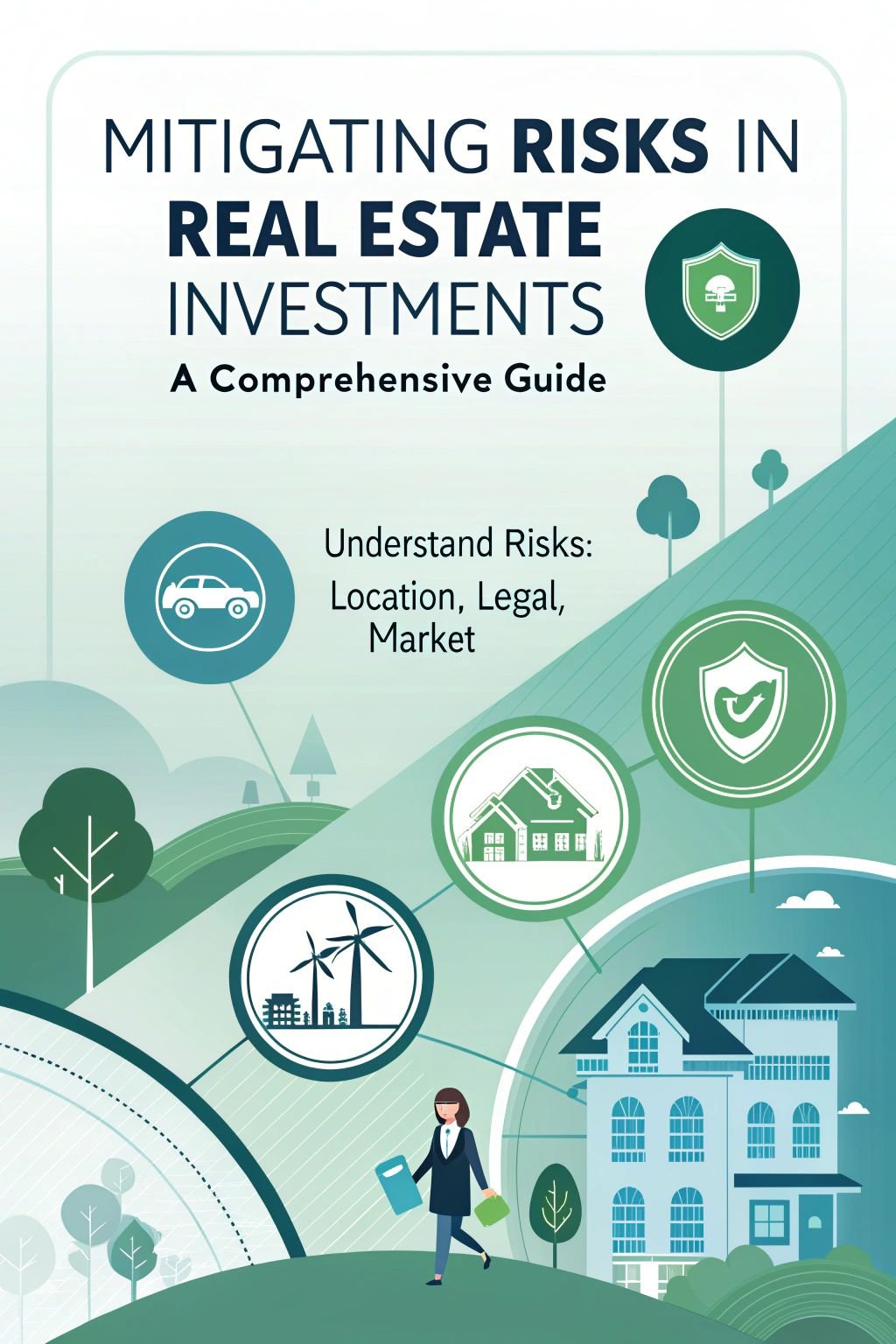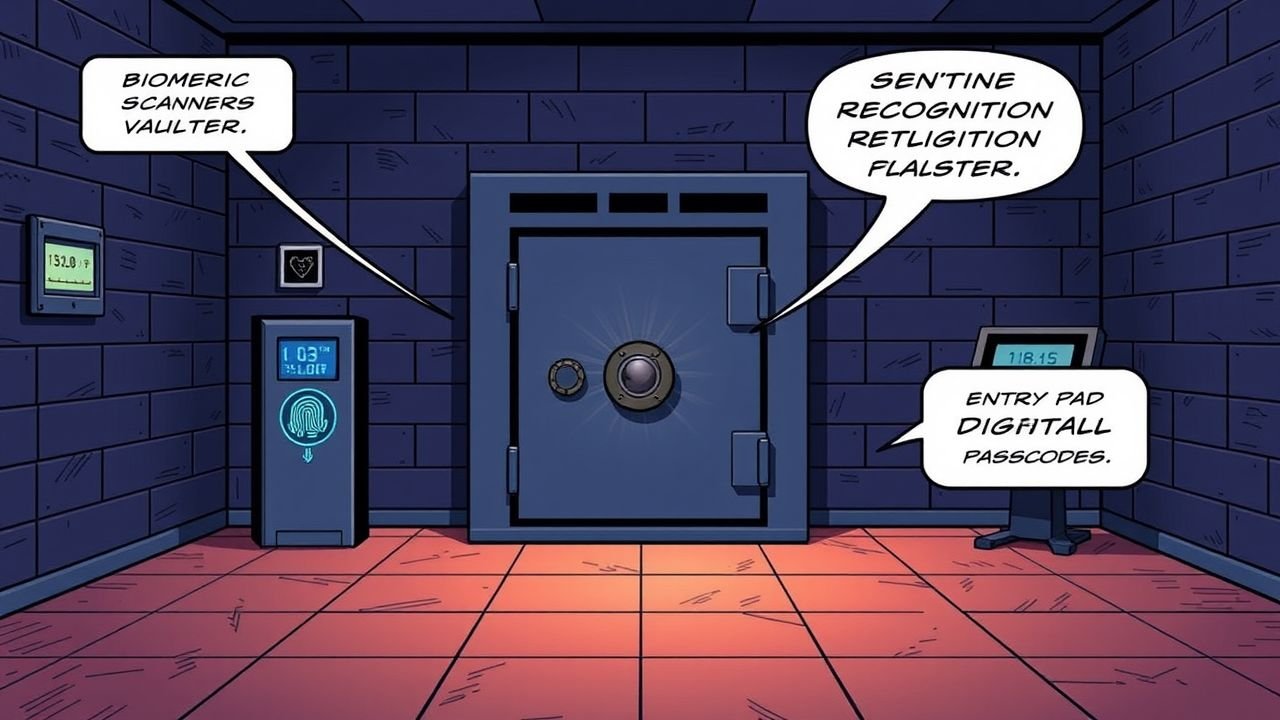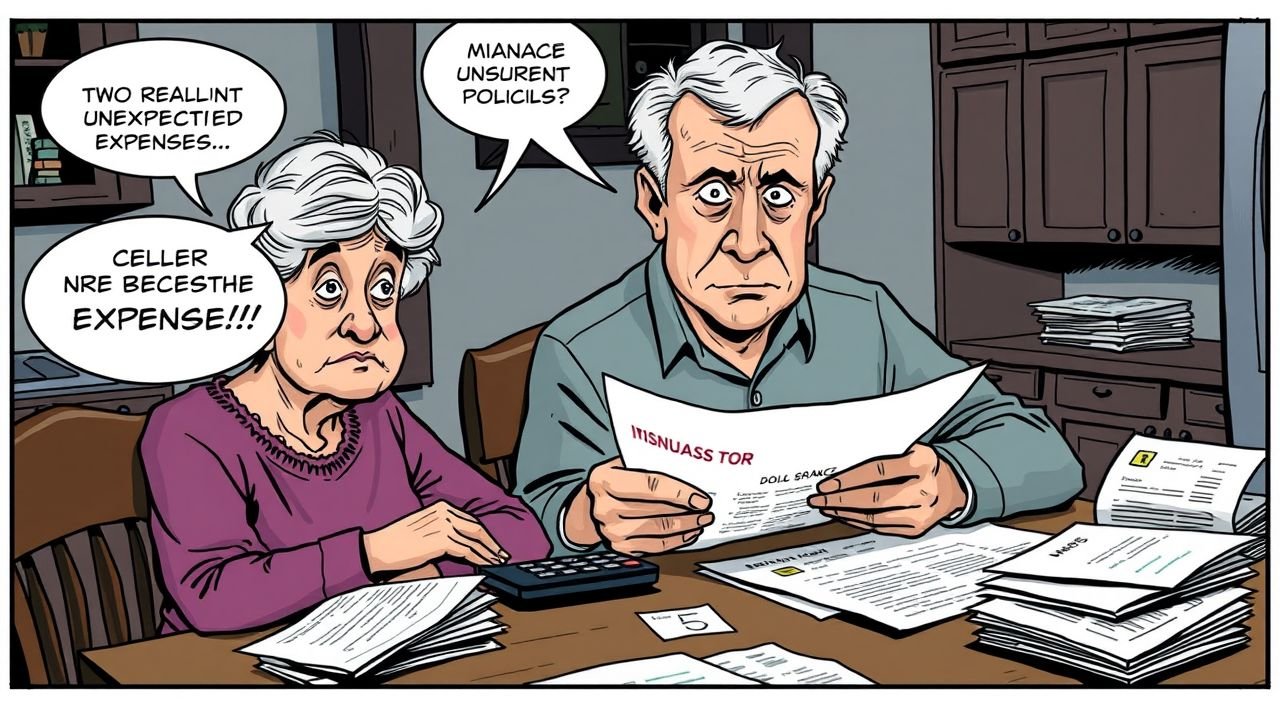Investing in real estate can boost your wealth, but it comes with real estate investment risks.2 You might worry about choosing the wrong location, having empty properties, or dealing with difficult tenants.
These challenges can affect your profits and peace of mind.
Real estate is one of the top long-term investments in the U.S. By understanding the risks, you can protect your money and succeed.1 This guide will show you how to research markets, choose the right properties, and manage them well.
Take control of your investments and build a safer future.3
Key Takeaways
- Know the Risks: Learn about market changes, bad locations, property problems, and legal issues to protect your investments.
- Do Market Research: Study local trends, economic signs, and demographics to choose the best properties and areas.
- Diversify Your Investments: Invest in different property types and locations to spread out risk and ensure steady income.
- Manage Properties Well: Screen tenants carefully, keep clear lease agreements, and do regular maintenance to avoid problems.
- Save Money for Emergencies: Keep a reserve fund and get good insurance to handle unexpected costs and keep your investments safe.

Understanding the Risks in Real Estate Investments

Real estate investing comes with its own set of challenges. You could face market changes, location issues, or problems specific to your property.
Market Risk
Market risk means your property values can drop. Many things can cause this. Supply and demand changes can lower prices. Economic conditions also play a big role. When the economy slows, rental income might fall.
Interest rates rising can make mortgages more expensive. These factors can hurt your real estate investments. Before the 2008 Great Recession, many thought real estate always goes up.
But property values can go down too. Keeping an eye on market trends helps you stay ahead. 1
The market can be unpredictable. Stay informed and prepared.
Stay updated with real estate market analysis. Watch for signs of an economic downturn. Job growth and inflation affect property values too. Government policies and interest rates are key factors.
By understanding these elements, you can better manage your investments. Regular research and monitoring make it easier to handle market risk. 2Location Risk
Shifting focus from market risk, let’s explore location risk. The area where your property is located plays a big role in rental demand and the types of tenants you attract. A good location can lead to higher rental rates and better property appreciation over time.
For example, properties in neighborhoods with strong job growth often see increased demand and rising values. 3
Properties can’t be moved, so choosing the right spot is crucial. Researching the neighborhood’s demographics helps you understand who might rent your property. Look at factors like local schools, safety, and amenities.
These elements influence tenant satisfaction and long-term rental income. Spotting a desirable location early can set you up for steady cash flow and reduce the chances of vacancies. 4
Investors who prioritize location risk often see better returns. High-demand areas tend to maintain their value even when the market fluctuates. By focusing on areas with potential for growth, you can protect your investment against economic downturns.
Keep in mind, thorough research on location can make a significant difference in your real estate success.
Property-Specific Risk Property-specific risk can hit you hard if you’re not prepared. Imagine discovering a faulty foundation that costs $100,000 to fix or needing to replace major systems every 15 years, costing over $10,000 each time.
Property-specific risk can hit you hard if you’re not prepared. Imagine discovering a faulty foundation that costs $100,000 to fix or needing to replace major systems every 15 years, costing over $10,000 each time.
These hidden structural problems can drain your cash flow quickly. Plus, dealing with problem tenants—like those who miss payments or cause property damage—adds more stress and expenses.
High vacancy rates mean less rental income to cover your mortgage, taxes, and maintenance costs, making it tough to keep your investment profitable. 3
Managing these risks is crucial for real estate investors and landlords. Regular property inspections help spot issues early before they become expensive repairs. Effective property management can reduce tenant problems and keep your rental property in good shape.
Building a financial cushion ensures you have funds for unexpected expenses, keeping your investment steady even when things go wrong. By staying on top of property-specific risks, you can protect your investment and maintain a steady rental income.
Liquidity Risk
Real estate investing ties up your cash more than stocks or bonds. 3 Selling a property quickly can mean lower prices or even losses. This is called liquidity risk. If you need money fast, options like home equity loans or cash-out refinancing can help.
Keep in mind that selling also involves paying real estate commissions, which reduces your profits.
Legislative and Regulatory Risks
Legislative and regulatory changes can significantly impact your real estate investments. Rent control laws may limit how much you can increase rental income, affecting your cash flow.
Property taxes might rise, reducing your overall profits. Staying informed about local and state regulations helps you stay compliant and avoid unexpected fines. 3
Zoning laws play a crucial role in determining how you can use your property. If zoning regulations change, it could affect your property’s value and your ability to rent out spaces.
Furthermore, new property management requirements can introduce extra costs or operational challenges. Keeping up with these legal updates ensures your investments remain secure and profitable.
Next, explore effective strategies to mitigate these risks and safeguard your investments.
Strategies for Mitigating Risks

Want to make your real estate investments safer? Use these strategies to protect your money and grow your portfolio.
Conducting Thorough Market Research
Paragraph of Text:
Market research is essential for smart real estate investing. It helps you find properties that can grow in value and attract good tenants.
Steps to Conduct Thorough Market Research:
- Analyze Local Market Trends
- Look at how property values are changing in the area.
- Check if rental rates are going up or staying the same.
- Use data from recent sales and market reports to understand trends.
- Study Economic Indicators
- Examine the local job growth and economic health.
- More jobs mean more people can afford to rent.
- Check income levels and population growth for the area.
- Examine Demographics
- Know who lives in the neighborhood.
- Different groups look for different types of homes.
- Understand the age, income, and lifestyle of potential renters.
- Assess Supply and Demand
- Find out how many rental properties are available.
- High demand with low supply can increase your rental income.
- Look at occupancy rates to see how easy it is to find tenants. 5
- Review Zoning Laws and Regulations
- Understand the local zoning laws that affect your property.
- Make sure the property meets all city regulations.
- This helps avoid legal issues down the line.
- Calculate Potential Income and Expenses
- Estimate how much rent you can earn.
- Include costs like property taxes, insurance, and maintenance.
- Use tools like net present value (NPV) and internal rate of return (IRR) to evaluate profitability.
- Use Real Estate Market Analysis Tools
- Utilize online platforms like Zillow or local real estate databases.
- These tools provide valuable data for your research.
- They help you make informed decisions based on accurate information.
Doing thorough market research sets you up to make better investment choices and reduces risks. 6 Next, let’s explore how diversifying your investment portfolio can further protect your real estate investments.
Diversifying Your Investment Portfolio
Diversifying your investment portfolio spreads out your risk. It helps protect your money from market ups and downs. 1
- Invest in Different Property Types
Mix residential, commercial, and industrial properties. Each type reacts differently to market changes. For example, rental income from homes can balance losses from offices during a downturn. - Choose Various Locations
Buy properties in different areas. Markets vary by location, so a dip in one place might be offset by growth in another. Look for regions with strong job growth and stable property values. - Include Real Estate Investment Trusts (REITs)
REITs let you invest in real estate without owning physical properties. They offer liquidity and diversification. Plus, you can earn passive income through dividends. - Mix Short-Term and Long-Term Investments
Combine properties that you can sell quickly with those you hold for years. This balance helps manage liquidity risk and ensures steady cash flow from rentals. - Use a Variety of Financing Options
Blend fixed-rate mortgages with other financing methods. This approach reduces leverage risk and stabilizes your interest payments, even if rates change. - Spread Investments Across Different Economic Sectors
Invest in properties tied to various industries like healthcare, technology, and retail. Economic downturns affect sectors differently, so diversification can safeguard your investments. - Participate in Real Estate Crowdfunding
Join platforms that pool money for larger projects. Crowdfunding allows you to invest smaller amounts in diverse projects, enhancing your portfolio’s variety. - Monitor and Adjust Your Portfolio Regularly
Keep an eye on market trends and property performance. Regular assessments help you make informed decisions and rebalance your investments to maintain diversification.
Diversifying your investment portfolio spreads risk and opens up multiple streams of income. Start diversifying today to build a stronger, more resilient real estate investment strategy.
Implementing Effective Property Management
Effective property management keeps your investments running smoothly and your tenants happy. Good management reduces risks and protects your income.
- Screen and Select Reliable Tenants
Choose tenants carefully to ensure they pay rent on time and take care of your property. Use background checks and verify income to find trustworthy renters. - Establish Clear Lease Agreements
Create detailed leases that outline rules and responsibilities. Clear agreements prevent misunderstandings and reduce the chance of disputes or evictions. - Regular Property Inspections and Maintenance
Conduct routine inspections to spot issues early. Regular maintenance keeps the property in good condition and avoids costly repairs later. - Maintain Positive Tenant Relations
Build good relationships with your tenants by being responsive and respectful. Happy tenants are more likely to stay longer and treat your property well. 7 - Reduce Liability Risks
Implement safety measures to protect both your tenants and your investment. Proper lighting, secure locks, and clear emergency procedures can prevent accidents and legal issues. - Prepare for Natural Disasters and Emergencies
Have a plan in place for natural disasters like floods or earthquakes. Ensure your property is equipped to handle emergencies to minimize damage and protect your tenants. - Use Professional Property Management Services
Consider hiring experts to manage day-to-day operations. Professional managers can handle tenant issues, maintenance, and legal requirements efficiently. - Stay Compliant with Local Laws and Regulations
Keep up-to-date with zoning laws, property taxes, and other regulations. Compliance avoids legal troubles and ensures your investment remains secure.
Implementing these property management strategies helps you manage risks and maximize your real estate investments.
Maintaining a Financial Cushion
Keep some money aside for surprises. Cash reserves help you handle unexpected costs like repairs or empty units. 8 Aim to save enough for six months in a savings account or twelve months if you invest for higher returns.
This cushion covers operating costs, loan payments, and property management fees.
.
Prioritize building and replenishing your reserves before buying more properties. This strategy ensures you stay stable even when rental income drops or interest rates rise. A strong financial cushion protects you from liquidity risk and keeps your real estate investments safe. 8
.
Assessing and Managing Tenant Risks

Picking the right renters and setting clear lease rules can cut tenant risks—keep reading to find out how!
Screening and Selecting Reliable Tenants
Finding the right tenants can make or break your real estate investment. Follow these steps to select reliable tenants and protect your rental income.
- Run Credit and Background Checks
- Use a tenant screening service to check credit scores and history. 10
- Look for any past evictions or criminal records.
- Good credit often means tenants pay rent on time.
- Contact Previous Landlords
- Ask former landlords about the tenant’s behavior and payment history.
- Reliable landlords will share if the tenant was respectful and timely with rent.
- Positive references reduce tenant risk.
- Verify Employment and Income
- Request proof of income, like pay stubs or bank statements.
- Ensure the tenant earns at least three times the monthly rent.
- Steady income helps maintain consistent cash flow.
- Follow Fair Housing Laws
- Use the same screening criteria for all applicants.
- Avoid discrimination based on race, religion, or family status. 9
- Complying with laws protects you from legal issues.
- Interview Potential Tenants
- Have a face-to-face or virtual meeting with applicants.
- Ask about their rental history and reasons for moving.
- Personal interactions can reveal more about their reliability.
- Set Clear Lease Agreements
- Outline rules and expectations in the lease.
- Clearly state payment terms and responsibilities.
- A clear agreement helps prevent future conflicts.
- Check Employment Stability
- Confirm how long the tenant has been with their current employer.
- Long-term employment indicates financial stability.
- Stable jobs reduce the chance of missed rent payments.
- Use Online Screening Tools
- Utilize platforms that offer comprehensive tenant screening.
- These tools can speed up the process and provide detailed reports.
- Technology makes managing tenant risk easier.
By following these steps, you can find tenants who are trustworthy and capable of maintaining your property well. Reliable tenants ensure steady rental income and reduce the financial risks in your real estate investments.
Establishing Clear Lease Agreements
Clear lease agreements protect your investment and ensure you receive steady rental income. 11 Your lease should outline the rent amount, payment dates, and late fees. Define how the property can be used to avoid misuse.
Set the lease term, like one year, so both you and your tenant know the timeframe. Include security deposits to cover any damages or unpaid rent. Make sure the lease follows local laws to keep everything legal and smooth.
Good communication about lease terms builds trust and reduces tenant risks. Written leases spell out the rights and duties of both you and the tenant. 11 This clarity helps prevent misunderstandings and conflicts.
Regular property inspections and maintenance should be part of the agreement to keep the property in good shape. A well-written lease is a strong tool for effective property management and protects your real estate investment.
Regular Property Inspections and MaintenanceRegular property inspections keep your investment safe. They help you find problems early and maintain property value. 12
- Schedule Regular Checks: Inspect your property at least twice a year. Catching issues early stops small problems from becoming big, costly repairs. This reduces your real estate investment risks and protects your property values.
- Spot Structural Issues: Look for cracks, leaks, or other signs of damage. Finding these early saves you money and keeps your tenants happy. Structural problems can hurt your cash flow if not fixed quickly.
- Verify Tenant Compliance: During inspections, make sure tenants follow lease agreements. This lowers tenant risk and ensures steady rental income. Happy tenants are less likely to cause problems or leave early. 12
- Keep Detailed Records: Write down everything you find in each inspection. These records help prove your property’s condition for insurance claims. Good documentation makes handling claims easier and faster.
- Handle Maintenance Promptly: Fix any issues right away to keep your property in good shape. Quick maintenance keeps your cash flow positive and prevents unexpected expenses. Regular upkeep also boosts your passive income from rentals.
By staying on top of inspections and maintenance, you protect your investment and enjoy long-term benefits.
Financial Strategies to Protect Your Investments

Protect your investments with the right insurance coverage. Keep a reserve fund for surprise costs to ensure your cash flow stays strong.
Adequate Insurance Coverage
Adequate insurance coverage secures your real estate investment. It shields you from financial losses due to natural disasters or structural problems. 14 Comprehensive policies cover legal claims and lost rental income when vacancies occur.
With the right insurance, your cash flow remains stable even during tough times. 13 This financial safety net helps maintain your long-term investment goals. Managing insurance proactively keeps your portfolio strong and safe.
Building Reserves for Unexpected Expenses
Maintaining a strong financial cushion is crucial after securing adequate insurance coverage. Reserves act as your safety net for unexpected expenses. They help cover sudden repairs, vacancy periods, or emergency costs that may arise with your investment property. 8
Lenders typically require you to have 2 to 6 months of reserves when financing investment properties. Prioritizing the building and replenishing of reserves ensures your financial stability.
These funds should cover operating costs, loan payments, and property management fees. By having reserves, you protect your cash flow and keep your investment secure during tough times. 15Leveraging Professional Financial Analysis
Hiring a pro for financial analysis can make a big difference in your real estate investments. They help you crunch the numbers on cash flow and return on investment. By evaluating risk-adjusted returns, you get a clear picture of which properties are worth your money.
Don’t just guess—use investment analysis to see if the rental income covers your mortgage payments and other expenses. This way, you avoid surprises and make smarter decisions. 1
Experts also handle market research and property valuation. They look at real estate market trends and property-specific risks to keep your investments safe. With their help, you can build a diversified portfolio that stands strong even when interest rates change.
Plus, professional financial analysis ensures you have the right financial statement analysis and reserve funds for unexpected expenses. Take action now and secure your investments with professional insights!
Legislative and Regulatory Considerations in Real Estate Investments

Local zoning laws play a big role in real estate investing. They decide what you can and cannot do with your property. For example, turning a house into a rental might need special permits.
If you ignore zoning rules, fines can pile up fast. Staying updated on these laws helps you avoid unexpected costs and keeps your investment safe. 1
Property taxes are another key factor. They can change based on new regulations. Higher taxes can eat into your rental income. It’s crucial to factor these into your budget. Also, keep an eye on rent control laws.
These rules can limit how much you can raise rent, affecting your cash flow. Compliance with all local and state regulations ensures your investment stays profitable and avoids legal troubles. 16
Next, let’s explore how to assess and manage tenant risks effectively.
Conclusion

Carefully study the market and choose the right properties to lower your risks. Diversify your investments and manage your properties well to keep your cash steady. Screen tenants and maintain your properties to avoid surprises.
Use these strategies to make real estate investing safer and more profitable. Start today and build a strong financial future.
FAQs
1. What are the biggest real estate investment risks?
Real estate investing comes with risks like market risk, where property values can drop. There’s also tenant risk if renters don’t pay on time. Don’t forget about interest rates rising, which can affect your mortgage payments. Plus, natural disasters can damage your property. Knowing these risks helps you protect your investment.
2. How can I ensure steady rental income?
To keep your rental income steady, choose a good location with high rental rates and strong job growth. Screen tenants carefully to reduce tenant risk. Regular property inspections help spot structural problems early. Managing your property well also boosts occupancy rates, ensuring you get consistent passive income.
3. What strategies can mitigate liquidity risk in real estate?
Mitigate liquidity risk by diversifying your investments. Consider real estate investment trusts (REITs) which are easier to sell than physical properties. Real estate crowdfunding is another option for adding variety without tying up all your cash. A diversified portfolio helps you stay afloat during market fluctuations.
4. How do zoning laws affect my property investment?
Zoning laws determine what you can do with your property. They can impact things like building additions or changing property use. Understanding zoning laws helps avoid legal issues and ensures your investment aligns with local regulations. It’s a key part of real estate market analysis.
5. Can a diversified portfolio reduce investment risk?
Absolutely! Diversifying your investments spreads out risk. Don’t put all your money in one property or location. Mix in different types like commercial real estate, REITs, and real estate crowdfunding. A diversified portfolio can better handle economic downturns and market fluctuations, keeping your cash flow stable.
6. What role does property inspection play in managing investment risks?
Property inspections are crucial for identifying structural problems before they become expensive fixes. Regular inspections help maintain property values and ensure safety for tenants. By catching issues early, you reduce property-specific risk and avoid unexpected costs, keeping your long-term investment secure.
References
- ^ https://toljcommercial.com/mitigating-risks-in-real-estate-investments/
- ^ https://www.deanfrancispress.com/index.php/fe/article/view/1085 (2024-08-14)
- ^ https://smartasset.com/mortgage/real-estate-investment-risk (2024-09-12)
- ^ https://www.realpha.com/blog/real-estate-investment-risks-challenges-basic-guide (2024-04-12)
- ^ https://www.tylercauble.com/blog/marketresearch101 (2024-08-29)
- ^ https://www.linkedin.com/pulse/7-strategies-minimize-risk-real-estate-investment-borice-nanda-pph7f
- ^ https://baldwin.com/insights/real-estate-risk-management-strategies-to-protect-your-investments/ (2024-09-27)
- ^ https://www.instalend.com/blog/9-risk-mitigation-strategies-for-real-estate-investors (2023-11-15)
- ^ https://smartasset.com/mortgage/tenant-screening-checklist (2024-08-15)
- ^ https://files.consumerfinance.gov/f/documents/cfpb_tenant-background-checks-market_report_2022-11.pdf
- ^ https://www.azibo.com/blog/the-ultimate-guide-to-lease-agreements (2023-11-10)
- ^ https://www.walkden.co/pages/real-estate/blog/15761/the-critical-role-of-routine-inspections-in-property-management
- ^ https://www.mutualofomaha.com/advice/tackle-my-finances/mitigating-financial-risk-strategies-for-a-more-stable-future (2024-05-28)
- ^ https://www.financialresearch.gov/the-ofr-blog/2023/12/14/property-insurance-market/ (2023-12-14)
- ^ https://realestatefinancialplanner.com/reserves/
- ^ https://news.miami.edu/law/stories/2024/11/understanding-real-estate-investment-legal-considerations-with-an-mls.html (2024-11-21)





















